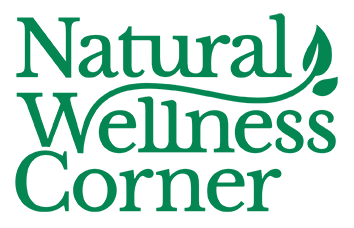When most people think about fitness, they envision traditional exercises like running on a treadmill, lifting weights, or taking a cycling class. While these activities are great for building strength and endurance, functional fitness takes things a step further by mimicking the movements you do every day.
Functional fitness is about more than just looking good; it’s about improving your ability to perform daily activities with greater ease, reducing the risk of injury, and enhancing overall quality of life. As a certified personal trainer, I’m excited to break down the many benefits of functional fitness and how it can positively impact your everyday routine.
What is Functional Fitness?
Functional fitness refers to exercises and movements that simulate the tasks and motions you perform in daily life, such as bending, lifting, squatting, and twisting. These exercises are designed to improve your body’s ability to move efficiently and safely in real-world situations.
Instead of isolating specific muscles (like traditional bodybuilding), functional training focuses on working multiple muscle groups at once, often in a dynamic and coordinated way.
Benefits of Functional Fitness in Everyday Life
1. Improved Mobility and Flexibility
Functional fitness exercises often involve full-body movements that require you to bend, reach, and twist, improving both flexibility and mobility. Increased flexibility in the hips, shoulders, and spine helps you move through daily activities with less stiffness and discomfort.
For example, picking up a heavy box or bending to tie your shoes will feel easier when you have improved flexibility and mobility, both of which are key components of functional fitness.
2. Enhanced Strength for Daily Activities
Functional fitness builds strength in a way that directly translates to everyday tasks. Movements like squatting, lunging, and pressing help you lift heavy objects, carry groceries, or even perform home maintenance tasks without straining your muscles.
Strengthening your legs, core, and upper body can make lifting, carrying, and bending much easier, allowing you to move through life with more confidence and less discomfort.
3. Better Posture and Balance
Many functional exercises focus on core strength, stability, and balance—all of which are essential for good posture. Improving your balance through exercises like lunges, stability ball work, and resistance band exercises can help you avoid falls and injuries.
Good posture and balance also reduce back pain, neck strain, and other common issues caused by poor alignment. Plus, balance training is particularly important as we age, as it helps to prevent falls and maintain independence.
4. Injury Prevention
Functional fitness trains your muscles, joints, and connective tissue to work together in a coordinated manner, which helps to protect you from injury during everyday activities. By strengthening key areas like the core, lower back, hips, and knees, functional fitness helps reduce the likelihood of strains and sprains.
When you build a strong, well-coordinated body, you’re less likely to experience the common aches and pains associated with repetitive motions or sudden movements.
5. Increased Endurance for Daily Tasks
Functional fitness not only builds strength, but also boosts cardiovascular endurance. Performing exercises that mimic real-life movements, like carrying groceries or playing with kids, can improve your stamina, making everyday tasks feel less taxing.
For example, after regularly practicing functional fitness, you may notice you have more energy when walking up stairs or carrying heavy bags, and you might find you’re not as winded after a long day of activity.
6. Time Efficiency
Many functional fitness exercises engage multiple muscle groups simultaneously, meaning you can get a full-body workout in a shorter amount of time. This makes it easier to fit functional training into your busy schedule, without needing long hours at the gym.
Movements like kettlebell swings, deadlifts, or burpees challenge your entire body, so you get maximum benefit with minimal time spent.
Examples of Functional Fitness Exercises
If you’re looking to add functional fitness into your routine, here are some great exercises to try:
- Squats – Mimic the movement of sitting down and standing up, helping strengthen the legs and core.
- Lunges – Help with balance, coordination, and stability while targeting the lower body.
- Deadlifts – Improve the ability to lift heavy objects from the ground safely, strengthening the posterior chain (hamstrings, glutes, back).
- Push-ups – Strengthen the upper body and core, supporting pushing motions in everyday tasks.
- Planks – Build core strength, improving posture and stability.
- Medicine Ball Twists – Mimic rotational movements that help with lifting, carrying, and reaching in daily life.
Final Thoughts
Functional fitness isn’t just about lifting heavy weights or performing advanced exercises—it’s about improving your body’s ability to function well in real-world situations. Whether you’re carrying groceries, picking up your kids, or gardening, functional fitness can make everyday tasks easier, safer, and more efficient.
So, if you’re looking to improve your daily life and reduce your risk of injury, consider incorporating functional fitness into your routine. Your body will thank you!
Need one-on-one diet and health support?
Get the best personalized, comprehensive care that addresses root causes instead of symptom management.
- Improve your quality of life
- Achieve your healths goals
- Pay as little as $0 with insurance


